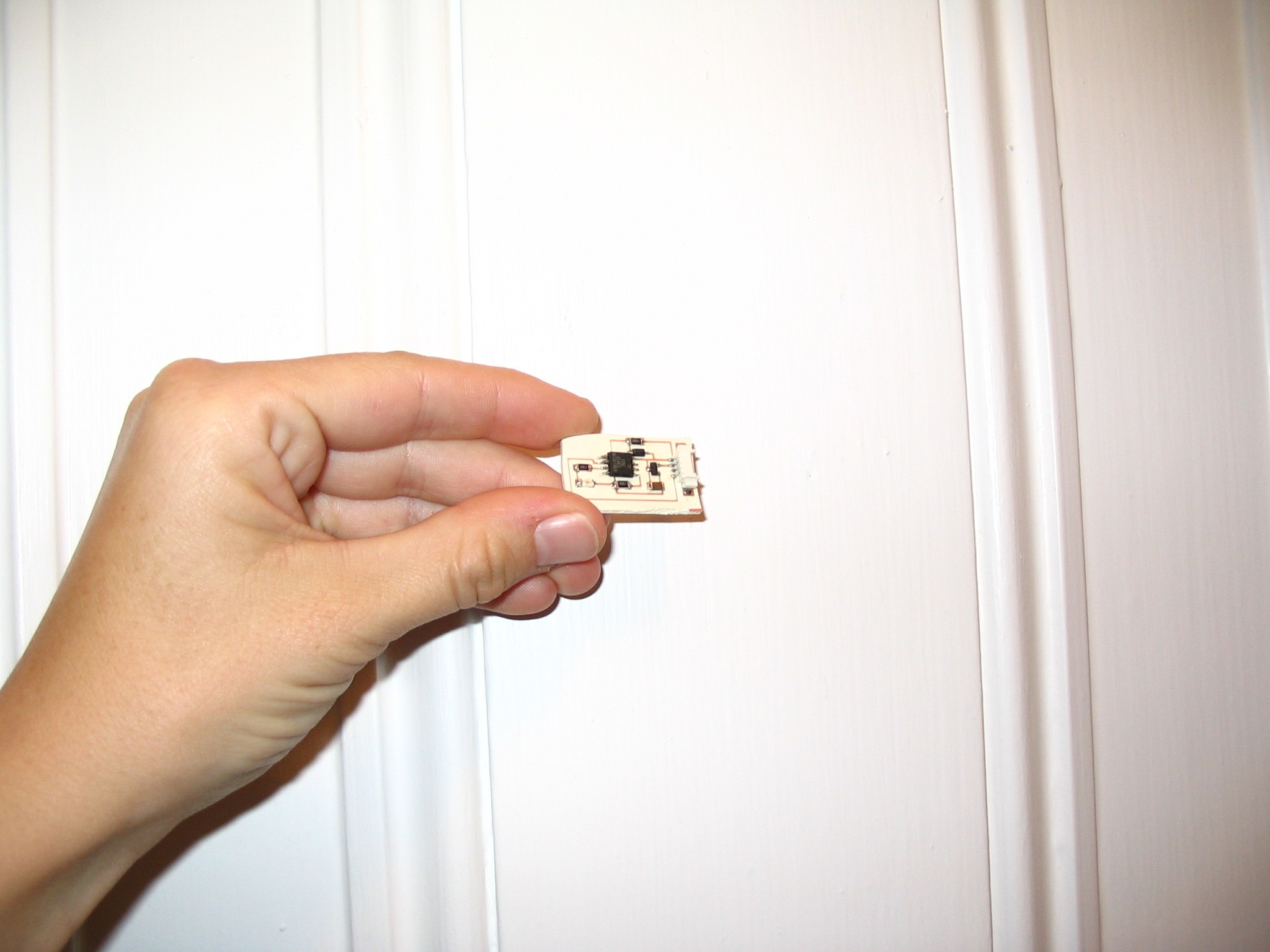Stacy DeRuiter's How To Make Almost Anything Blog - Week Six
Hello World PCB chips: Send/receive and flashing LED
Wednesday, October 26
This week's assignment is supposed to be "easy," but to me seems much more daunting that last week's. We have to make parallel and serial cables for programming and communicating with Hello World (ATtiny13-controlled) chips, re-design the hello chip to do both input and output and to flash an LED as it does output, make the new chip, cobble together a program to make it work (using Neil's examples, which contain all the code fragments we need), and program/test the chip (for me, that means figuring out how to do the programming etc. from Windows, since I have no Linux computer of my own. The Fab Linux machines are my backup). I've finished making my cables (FINALLY), and I took lots of pictures for the cable-making-guru wesite. I have tested all the connections, but not tested the cables on a chip yet.
Friday, October 28
I tested my cables, and they work (Well, the serial cable sends data and powers a hello chip, and all the electrical connections in the programming cable are correct and continuous)! At least there's that. I have also designed, printed, and stuffed my board, although I have a few doubts as to whether I got all the circuits right. I have to test it to see!



Sunday, October 30
All the cables are done, the board is done, the program is cobbled together, and all the appropriate software is installed on my computer. I have compiled the program from asm to hex, and figured out how to use WinAVR's avrdude gui to send it to my chip. The only thing I lack now is a gender-changing DB9 serial adapter so that I can plug my serial cable into my computer! I will get that tomorrow morning and then pray that all this works, since I don't have too much time tomorrow to troubleshoot before class...
Monday, October 31
Well, I discovered that what I thought was a serial port on my computer was really a video/projector connection port, so what I needed was not a serial port gender-changer but a usb to serial adapter. Since those were $40 at Radio Shack this morning, and I just couldn't stand to pay that much for them, I decided I had to order one online and now I have to wait for it to arrive!
Friday, November 4
Well, the USB/serial adapter I ordered has not come yet (it's taking forever!), and since we finally completed work on our next assignment (Tom and I made a digital volt meter for the class 'multi-meter' - at least its first working iteration), I finally got to work testing my LED input/output chip with a media lab Linux computer. I had SO MUCH trouble getting my ATtiny13 programmed. My programming cable looks sound, and I have checked the continuity of all the electrical connections, and I have checked many times to make sure that all the right wires are connected to the right terminals. Nevertheless, it has NEVER worked. I even re-made both ends of the cable (put on a new parallel port and a new programming clip, one at a time with much attempted programming of chips in between), and STILL it has never worked. I have no idea why. Shani has a programming cable that has been known to work sometimes, and I did get that one to work once. I also found the MAS 863 class cable on our workbench - one of the connections to the programming clip was dislodged, and after I fixed that, it worked for me every time. Since I spent hours and hours trying to get my cable to work, to no avail, and the class one works fine, I have decided to just use that one in the future. I still have no explanation as to why mine doesn't work, but I have heard from others in the class that there are a lot of non-functional programming cables out there. After fixing one small bug in the assembly code for the LED/I/O (2 extraneous lines of code had to be deleted), it worked! I have a little chip that, if you input a letter of the alphabet, will output the next letter; as it outputs, its little red LED flashes. Hooray - finally!


